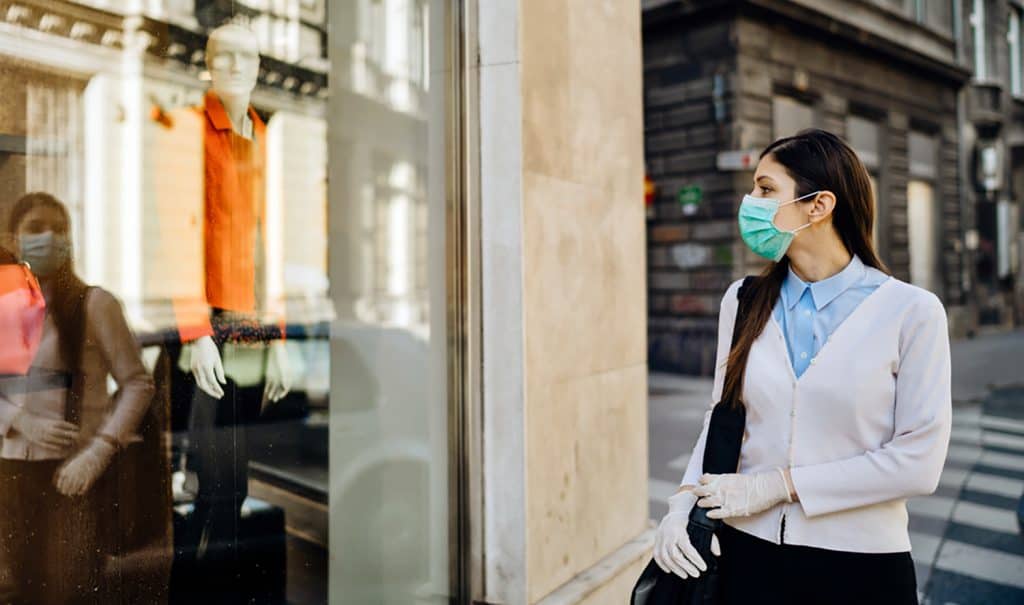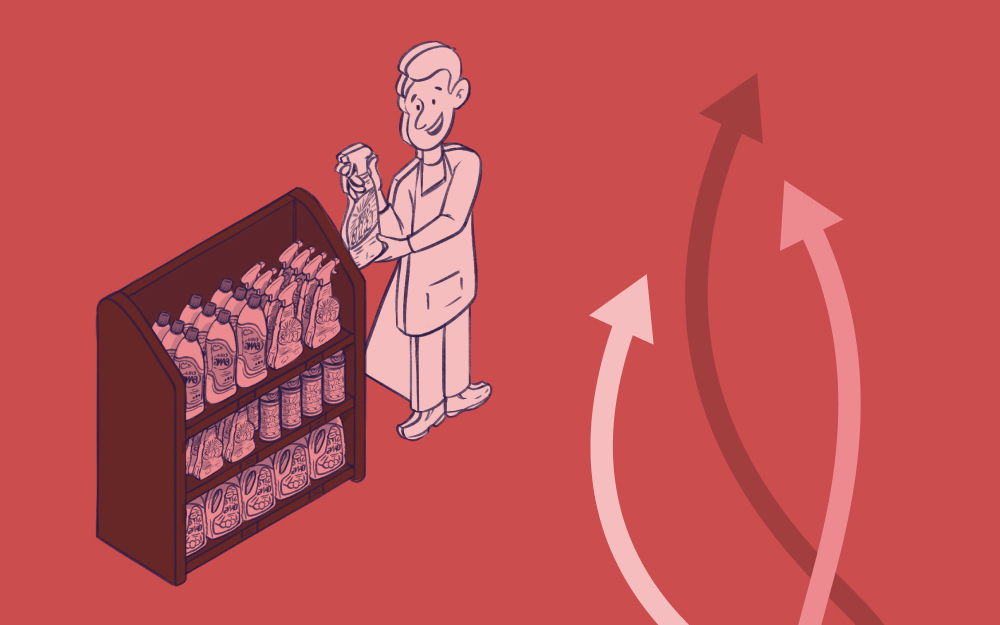Navigating physical retail marketing in the new corona reality


Retail, as we know it, has changed forever… But it’s not all bad news. With change, comes opportunity and consumers haven’t given up on bricks and mortar stores. According to the Office for National Statistics, sales in July surged above pre-pandemic levels. But, while consumers venture back to their favourite shops, how they interact with them has completely changed. This is where the potential for retailers to evolve really comes in. And, where you can get the most insight, and make the most beneficial decisions, when it comes to planning your instore marketing.
The majority of consumers now say that they are researching items online before shopping in store. And, 21% of UK shoppers saying that they are doing this even more since the Covid outbreak. The upside? When they arrive in store, they are there to purchase.
With this in mind, now is the time for simpler, easier to navigate stores with obvious signage and clearer paths to purchase. Today’s ‘determined shoppers’ aren’t there to window shop so any instore marketing needs to be clear and attention grabbing.
New one-way systems offer the opportunity to control the whole store narrative. You can tailor the customer journey from the moment they arrive, all the way through to checkout. With shoppers visiting with the intention of buying over browsing, you can make purposeful decisions about when and where to place promotions to have the most impact.
“ Conversion rates have increased dramatically. Customers are coming in looking for something in particular or are ready to spend after such a long period of not being able to.”
Store Manager, Fashion Retailer

Despite footfall still being well below pre-coronavirus levels, average spend is up with shoppers deciding to buy more in one visit rather than making multiple smaller trips. While many people have done more shopping online during Covid-19, consumers tend to spend more when they are in stores. The physical store environment enables customers to engage with new products in a way that can’t easily be replicated online.
While sales and discounts work to entice customers through the doors for their initial visits, it doesn’t take long for them to be reminded of their favourite products. It’s savvy to switch up your whole promotional strategy and be selective, and reactive, with the items you want, or need, to discount.
The Golden Quarter will look very different this year but it is a great opportunity to drive sales with sensitive messaging, agile product discounting and good value. If people continue to buy more in single visits rather than many smaller shops, it’s worth thinking about how you can make this easier for your customers. Consider streamlining click and collect services in store, investing in more enticing till-side marketing and installing clearer signage and instructions, particularly as footfall starts to pick up closer to Christmas.
“ When we initially reopened, the customer was looking for deals and bargains following the media reporting that retailers will be forced to reduce pricing. After the first week we saw customers returning to the brands they love.”
Store Manager, Fashion Retailer
Recent consumer research has found that 26% of shoppers say they will pay more for local products followed closely by 25% for trusted brands and 24% for ethical products. Two thirds of consumers in another survey said that they are happy to pay more for items if they last longer and are better quality. And it’s not just about the products they’re looking to buy, nearly 60% say they’ll spend more with companies that actively support the local community. Further research found that 43% of consumers said they expect businesses to be accountable for their environmental impact.
One thing is for certain when it comes to post-lockdown spending – community and social responsibility matters. Physical stores offer great spaces for you to share your company’s commitments to your staff, the environment and the local community. Take the opportunity to showcase your local or ethical brands and products.
With more people working remotely, they are relying on local shops. Use this to your advantage, build better relationships with customers by deploying marketing that is targeted and relevant. It’s also a good time to review how you are producing campaign materials and working to minimise unnecessary waste.
Initially, shoppers focussed largely on purchasing essential food items along with hygiene and cleaning products. Since then, they have been investing more in their homes, from maintenance and furnishings to entertainment. Having to stay at home for longer periods than ever before resulted in DIY sales jumping by 42% in May.
With many people working remotely long-term, this trend is likely to continue. But what’s next? After months without seeing friends and family, consumers are more focused on taking care of their mental health and wellbeing, their physical health and diet.
As a retailer, you’ll already know you need to keep a close eye on what customers are likely to want to buy in the coming months. Matching up stock availability with promotions and offers, and shifting obsolete stock has never been more important. Perhaps now is the time to put extra emphasis on brand promotions as a new or enhanced revenue stream.
“We are in a position where if we have any more [customers], we would be too overwhelmed. We’re often still having to queue customers on weekends as we reach a safety capacity.”
Store Manager, Furniture Retailer
The new instore environment is less about state of the art tech and more about introducing cost-effective and streamlined processes. Spend has shifted to focus on making the physical retail model as efficient and practical as possible. And, when it comes to marketing, it’s time to be creative in much simpler terms.
However, don’t feel like you’ve lost valuable tools in your inventory. Customers don’t expect to be wowed with interactive experiences. Instead invest in better click and collect services, virtual queuing systems and software that streamlines day-to-day operations for staff and customers.
There’s a lot to be said for the oldest instore marketing trick in the book – print. Posters and other printed marketing materials are quick to plan, deliver and update quickly to reflect changes in the market. They can also be used to grab the attention of passing customers and occupy those that are queuing.
Your POS needs to have the potential for longevity, and at the same time be able to be replaced overnight. When implementing anything new, particularly when it comes to instore marketing, track what works well and what doesn’t and try to respond dynamically to customer’s changing needs.
Rebuilding confidence to visit stores is going to be an ongoing challenge, and customer demographic plays a huge part. A study by Mintel found that 56% of over-65s are worried about being exposed to the virus, compared to just 40% of 16-24-year olds.
Further research has found that 79% of people say they are more likely to visit stores that limit the number of people inside. And 62% said they were more likely to spend with companies that prioritise the health and safety of staff. Showing customers that you are working hard to keep everyone safe and informing them of hygiene procedures, store traffic and product availability, can instantly put you at an advantage.
Enhanced or revised customer service techniques can also make customers more likely to visit. With the right tech, your store sales teams can use live video calls to advise remote customers about products and then guide them to complete their purchase in store.
Customers want their experiences, across all devices and channels, to be as frictionless as possible. Integrated services, like ‘buy online and pick up in store’ can bring more traffic to stores and combined with selective instore marketing, drive additional purchases once customers get there.

“We’ve found that once they’re confident their safety is covered, customers are actually chatting with our team and asking more questions than usual. I think that so many have missed social interaction, talking to us brings some normality back.”
Store Manager, Jewellers
Right now, campaigns need to have the most impact for minimum spend, so ask the following questions:
Shop floor teams have a wealth of knowledge about the customers they are seeing in store. They know when they are visiting, how their behaviour has changed, and which of your campaigns are gaining most traction. In times of uncertainty, make the most of this vital stream of information. Improve two-way communication with stores, and collect as much campaign feedback and data as you can.
If you’d like to cut costs, reduce waste and driving more sales with your instore marketing, get in touch today.
 Thought Leadership
Thought Leadership
With the hype surrounding e-commerce and direct-to-consumer, it's easy to lean towards these channels when...
 Thought Leadership
Thought Leadership
Whether you are a retailer, a brand, or a grocer, in-store media is a staple...